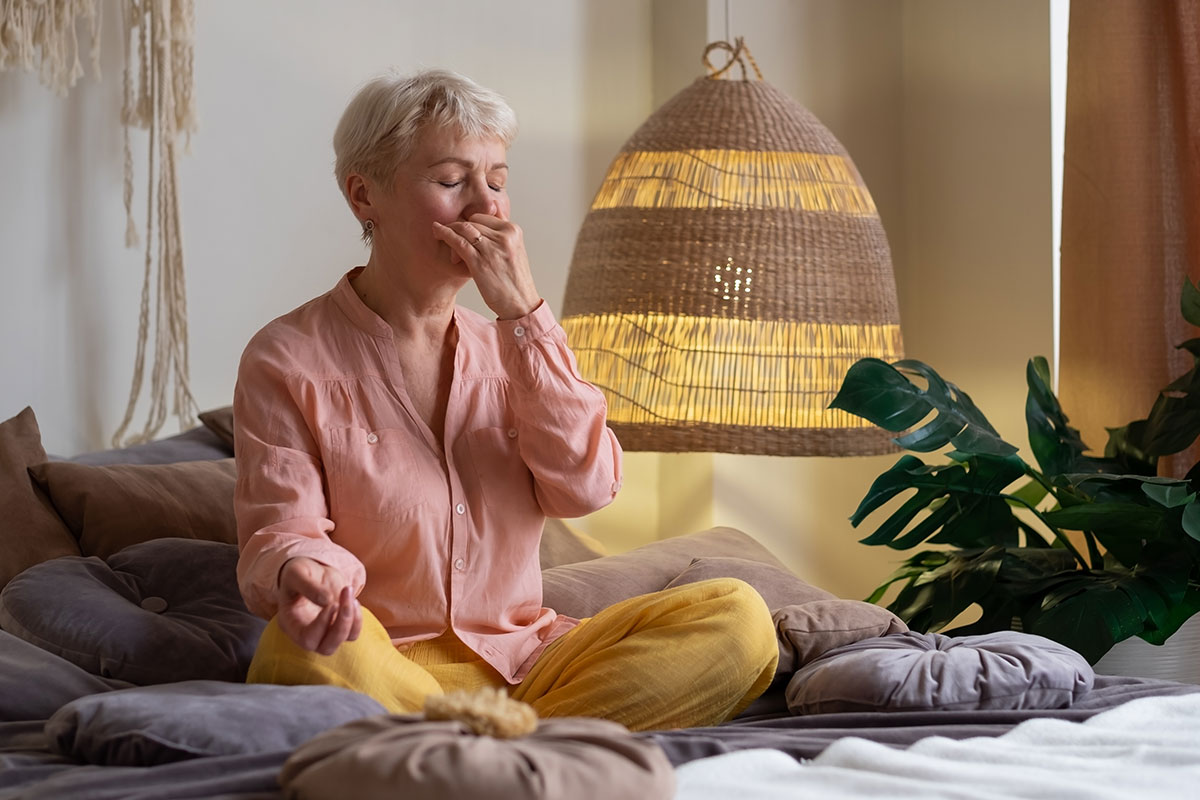
Pranayama, the power of Breath
What is pranayama? Prana and Ayama
Pranayama is a combination of 2 words – prana meaning the breath of life, respiration, vitaity, energy power and spirit. Prana creates, sustains and illuminates the universe linking it to the source and essence of life. It manifests itself as the physical breath and is involved with our subtle powers.
Ayama means to stretch, extend, restrain, stop, expand, lenghten in space and time, usually translated as control. “Pranayama is the process of expanding our small reservoir of prana by lengthening, directing & regulating the movement of the breath.” (1) Breathing is generally unconscious but constantly affected by our state of mind-body. Pranayama, the conscious practice of breathing, contributes to balance body and mind; it is the healing force we can count on anytime.(5)
What is the origin of this practice?
Pranayama originates from the Vedas, from the hymns passed orally inducing the priests to regulate their breathing to accommodate the rhythms of the hymns and consequently helping their memorization. This is what the scholars considered as the original development of pranayama.
Why is it so important to breathe well and What are the benefits of pranayama?
Poor respiratory habits can take a heavy toll on your physical, mental and emotional health and happiness – viruses and bacteria thrive, for example, when your body is oxygen-deprived from not breathing properly.(3)
• Benefits start with breath awareness followed by refining the flow of breath to work at gross and subtle levels.(4)
• Physical benefits – to stoke the gastric fire, to open the sinuses, to increase vitality, to cure many diseases/conditions,
• Mental benefits – to relax, to calm the mind, to balance body and mind, to increase mental concentration
• Emotional benefits – to quiet the sense organs, to balance the perceptions,
• Spiritual benefits – to grow awareness, to change the state of consciousness.
Today as most of us are living longer, we must be concerned about the quality of our lives. Longevity is not a matter of having more chronological years or physical longevity but should also include mental, emotional and spiritual well-being. What matters is the joy, freedom, love and awareness that we can experience along the way.(2) Pranayama is probably the most important rejuvenating practice that we can do on a daily practice. Many times a day focus on your breath to develop awareness. Learn to direct the breath and prana inwardly to the mind and heart for a better health.
Here is a Pranic key to well-being:
• Be conscious of and observe your breath (sitting quietly)
• Slow down the breath (and with it speech, mind and senses)
• Breath more deeply on inhalation, taking the breath down to the navel
• Balance the breath between both right & left nostrils (relaxing the shoulders)
• Breathe IN the natural prana around you
• Relax the breath into a deeper state of observation and meditation (closing the eyes for a moment)
• Now realize that you stopped thinking for a moment and just be present; add a smile and you will feel renewed!
Take time to breath!
Happy Holiday Season!
REF:
1. Rosen R., 2002. The Yoga of Breath, Guide to Pranayama. Shambhala, Boston. 304 p.
2. Frawley D., 2012. Soma in Yoga and Ayurveda, The Power of rejuveation and Immortality. Lotus Press. WI. 392 p.
3. Sawami saradananda, 2009. The Power of Breath, The Art of Breathing Well, for Harmony, Happiness and Health. Duncan Baird Publ. 160 p.
4. Stephens M., 2010. Teaching Yoga, North Atlantic books, California. 411 p.
5. Lad, V., 2010 Pranayama for Self-Healing, The Ayurvedic Institute, NM, video.


